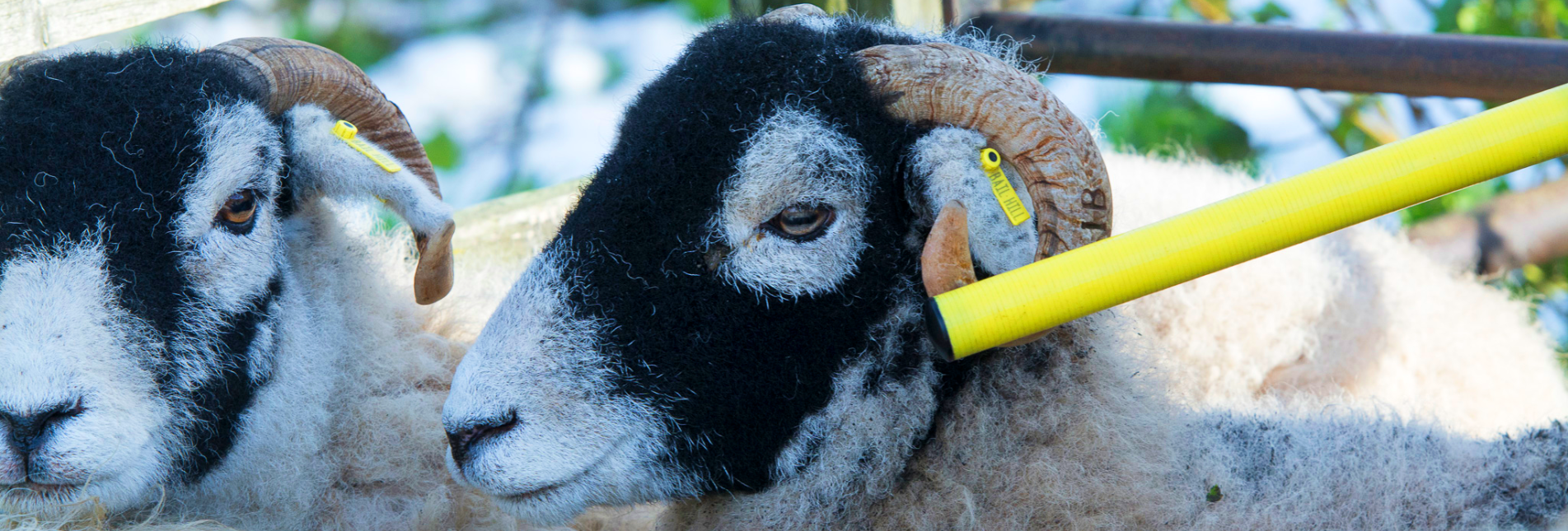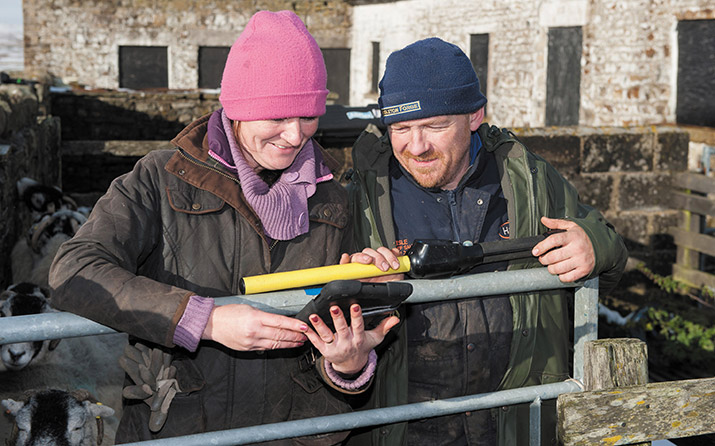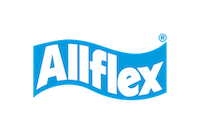
Using Farming Technology for Tagging and Traceability
The Intelligence of an EiD Ear Tag
Electronic Livestock Identification
Tagging and traceability are a core element of livestock farming these days, but what is becoming more widespread is the use of the “intelligence” gleaned from the humble ear tag. Livestock farmers are already using ear tags to keep records, a legal requirement, and by taking it a step further, they can use this resource of real-time data to make informed management decisions on the farm. This intelligence gathering and analysis is becoming an increasingly important factor in efficient, profitable and sustainable livestock production.
Tom and Kay Hutchinson, tenant farmers on a hill farm in County Durham and stars of the BBC’s Addicted to Sheep, invested in electronic identification and data gathering technology for the first time this year with the Allflex supplied RS420 stick reader, which links with a flock and herd management application called iLivestock.
“This is the way everything is going, and we wanted to learn before it became a necessity,” says Kay, who admits she had only really worked with basic Word and email programmes before. “We tag and record all our stock anyway, and there’s a lot of paperwork involved with traceability especially with the pedigree breeds. With an EID stick reader, it is just so quick and easy. It scans the flock and uploads the information onto the app while we’re still in the field. It records so much including meds, withdrawals and lambing details, and we can add our own notes, so over time we can use that data to make the flock more efficient and productive. It keeps us right, and it also makes us less reliant on labour.”
Farming at Bail Hill near Barnard Castle, the Hutchinsons have a flock of 180 breeding ewes, including 100 pedigree Swaledales. They are also renowned for their Kingshaugh prefix of pedigree Limousin and Hereford cattle.
“We liked that this system has sheep and cattle records in one place,” says Tom. “Everything is so instant and if you have an inspection, there’s no panic or major preparation as it’s all there on the iPad or mobile. It’s really great at tupping time too. It’s easy to think you will remember individual animals from one year to the next, but so much happens in between. With the iLivestock app, I can track back as far as great-grandparents and double check I am not putting a ewe in a field that’s related to the tup. It compensates for my bad memory! I just love the scope of what you can do with the app, and it’s constantly moving forward. It’s just a much more efficient and accurate way of working.”
When considering a leap into the world of technology, it can be a daunting process both financially and practically, but the Allflex technology has been designed so you can build up in stages, and also to be straightforward to use. You can start simply with ear tags and the iLivestock app to log key information.
The stick reader may come next, and, ultimately you can invest in handling and weighing systems, that all link to iLivestock.

“We can use the data to make the flock more efficient and productive”
Tom Hutchinson, County Durham
iLivestock Farming Software
Allflex hosted workshops earlier in the year focusing on getting the most out of the software, we found that “We are seeing livestock farmers engaging more and more with the technology, and, as a result, getting more out of it. The EID stick reader and iLivestock software essentially allows farmers to make better use of the data that tags provide. This can be keeping within the law on recording stock movements or building up a picture of their stock performance all the way from tupping and scanning through to production. Farmers can look back to see which ewes had a good lambing, or those that didn’t have milk, and use all this data to maximise flock performance and create efficiencies in their business. The information is there and you can use it in so many ways.”
The iLivestock app also allows you to create custom groups and record actions against multiple animals, and it recognises different holding numbers and records them appropriately. This is crucial for the Hutchinson family given that Tom’s father and the couple’s three young children have their own flocks of Swaledale and Herdwicks. They have found that routine tasks such as injecting or livestock movements on sales days are much easier using the stick reader.
“We scanned 53 sheep this morning in less than a minute,” says Tom, “It takes out the time and the stress. Before we had the stick reader, I was calling out tag numbers which so often get lost in translation by the time they are written down, or sometimes they are just difficult to read. With the stick reader, you get the accuracy.
It’s so quick that we can scan them on the day of the mart, and after a sale, you don’t have the problem of trying to locate any missing tag numbers. When it comes to administering medication, the app logs withdrawal periods for each animal medicated, and sends a reminder text when the period is over. It just makes life so much easier.”
“Allflex have been very good from the start,” Kay volunteers. “The aftercare is second to none, and if there’s a glitch they talk you through it. They are constantly evolving the system and have been really responsive to our feedback. We know what we need in the field, while their experience is technical, so you can work with them to improve it all the time. Often when we have suggested something, we will see it in the next update. It’s amazing that we can get all this information from an ear tag, and going forward I can see us using the iLivestock app more.”
